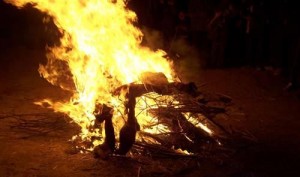
The Tibetan source who provided the images said: “The purpose of the action is to show that Tibetans will give up wearing animal skins completely and that they did not want to celebrate the New Year in 2009, because everyone thought it was a very black year for all Tibetan people in and outside of Tibet. Also by organizing this action, they would like to show their solidarity for the people who have sacrificed their precious lives for the freedom of Tibet after the violent crackdown in Lhasa last year and across Tibetan areas inside Tibet by the Chinese military forces.” (ICT)
The Tibetan source who provided the images said: “The purpose of the action is to show that Tibetans will give up wearing animal skins completely and that they did not want to celebrate the New Year in 2009, because everyone thought it was a very black year for all Tibetan people in and outside of Tibet. Also by organizing this action, they would like to show their solidarity for the people who have sacrificed their precious lives for the freedom of Tibet after the violent crackdown in Lhasa last year and across Tibetan areas inside Tibet by the Chinese military forces.” (Photo: ICT)
The burning of the wild animal furs as an expression of Tibetan loyalties was originally inspired by a statement made by the Dalai Lama during a major religious festival in 2006 in which he said he felt “ashamed” when he saw Tibetans wearing the pelts of endangered animals such as tigers or leopards.
Immediately after he made the comments, Tibetans all over Tibet began to burn animal skins – in monetary value the equivalent of burning family cars or houses. Their actions were expressions of loyalty both to the Dalai Lama and to the Tibetan Buddhist culture, which advocates compassion for all sentient beings. This is the first known instance of wild animal pelt burning linked to the protests that broke out across Tibet in March, 2008.
The animal pelts were burnt on February 9, 2009 in a village in Tsolho (Chinese: Hainan) Tibetan Autonomous Prefecture in Qinghai province in February, and the images have only just reached Tibetan exiles. A Tibetan source told ICT said that they believed the pelts had a monetary value of more than 100,000 yuan (at least US$14,000). Estimates of GNP per capita per year in Tibet range from US$65 to US$200.
The Tibetan source who provided the images said: “The purpose of the action is to show that Tibetans will give up wearing animal skins completely and that they did not want to celebrate the New Year in 2009, because everyone thought it was a very black year for all Tibetan people in and outside of Tibet. Also by organizing this action, they would like to show their solidarity for the people who have sacrificed their precious lives for the freedom of Tibet after the violent crackdown in Lhasa last year and across Tibetan areas inside Tibet by the Chinese military forces.”
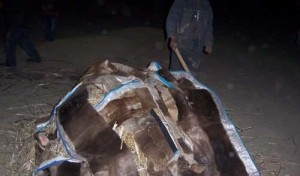
The animal pelts were burnt on February 9, 2009 in a village in Tsolho (Chinese: Hainan) Tibetan Autonomous Prefecture in Qinghai province in February, and the images have only just reached Tibetan exiles. (ICT)
Chinese authorities encourage Tibetans to wear furs to showcase the “exotic” Tibetan culture. This has included encouraging – or requiring – Tibetans at official events or performances to adorn themselves with expensive hats and robes made of pelts from endangered animals such as tigers or leopards.
Following the Dalai Lama’s comments three years ago, many Tibetans had stopped wearing such adornments and critised those who did. (ICT report, Tibetans burn wild animal skins in Tibet to encourage wildlife preservation – February 9, 2006).
A Tibetan blogger commented: “Obviously wearing fur has become an expression of one’s political standpoint, and [at one festival in 2007 in eastern Tibet] the high officials on their platform were watching to see which people from which parts of Tibet had “political consciousness”. But the people watching the performances were wearing considerably less fur than in previous years; many wore colorful cotton where once they wore fur trim.”
The Tibetan source who provided the new images of wild animal pelt burning this year said that the protests that have swept the Tibetan plateau since March, 2008, were an expression of the frustration and resentment against the vilification of the Dalai Lama by the Chinese authorities. He told ICT: “It is not possible even to say the name of His Holiness The Dalai Lama in the presence of officials. But despite their propaganda, we all know how highly honored and respected His Holiness is in the world, and if he makes a speech anywhere, so many people are waiting to hear about it. But all information about His Holiness the Dalai Lama is shut down inside Tibet. If the authorities noticed a small picture of him somewhere in your work place or home, you would be in jail for a while. That is the real situation in Tibet today. Many of Tibetan people are dying without hearing anything about His Holiness The Dalai Lama.”
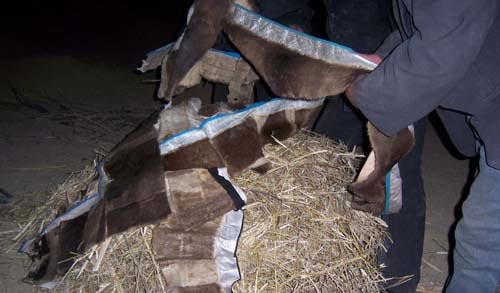
A Tibetan source told ICT said that they believed the pelts had a monetary value of more than 100,000 yuan (at least US$14,000). Estimates of GNP per capita per year in Tibet range from US$65 to US$200. (ICT)
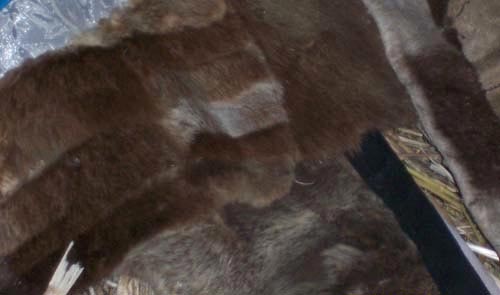
The burning of the wild animal furs as an expression of Tibetan loyalties was originally inspired by a statement made by the Dalai Lama during a major religious festival in 2006 in which he said he felt “ashamed” when he saw Tibetans wearing the pelts of endangered animals such as tigers or leopards. (ICT)
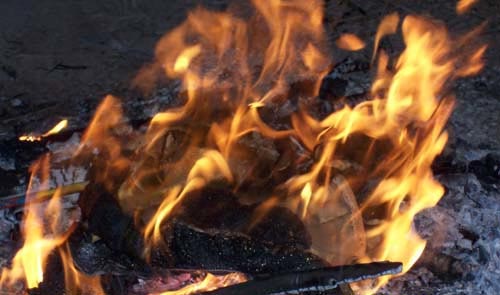
The Tibetan source who provided the new images of wild animal pelt burning this year said that the protests that have swept the Tibetan plateau since March, 2008, were an expression of the frustration and resentment against the vilification of the Dalai Lama by the Chinese authorities. (ICT)

